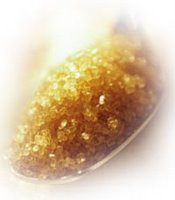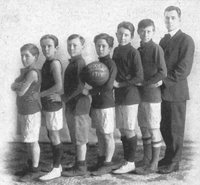What is the difference between white sugar and brown sugar?
 I grabbed a cup of tea and hoped that a "sugar" search would do the trick, but, after browsing through the various category matches, I decided that I'd save time and get better results by phrasing my search more specifically. So, I typed "white sugar brown sugar difference," without any punctuation.
I grabbed a cup of tea and hoped that a "sugar" search would do the trick, but, after browsing through the various category matches, I decided that I'd save time and get better results by phrasing my search more specifically. So, I typed "white sugar brown sugar difference," without any punctuation.Lo and behold, there was a site titled SKIL - Sugar Types. I noticed the URL, sucrose.com, and wondered about the acronym SKIL. On the home page we learned that it stands for Sugar Knowledge International, an independent organization and industry resource for sugar technology professionals based in the United Kingdom. It seemed like a reliable place to look up types of sugar.
Granulated white sugar is essentially pure sucrose, whether derived from tropical sugar cane, or temperate sugar beets. White sugars vary mostly in the size of their crystals. The degree of processing by the manufacturer may also account for different degrees of whiteness.
Brown sugars are of two basic types: sticky and free-flowing. Both are produced by adding a suitable type of syrup (these days it's usually molasses) to purified or refined sugar. The color and texture of the final product are determined by the ratio of sugar to syrup in the mix, as well the the original colors of the constituent ingredients.
For additional culinary information about sugar, I headed to the Epicurious Food Dictionary. There I found descriptions of raw sugars, tips for storage, and a list of sugar substitutions for cooks and bakers.
One more noteworthy difference: a cup of brown sugar has slightly more calories than white, but it "also contains 187 milligrams of calcium, 56 of phosphorous, 4.8 of iron, 757 of potassium and 97 of sodium, compared to only scant traces of those nutrients found in granulated sugar." Sweet!
Receive post updates by Email

































 Add my feed to your Rss
Add my feed to your Rss
